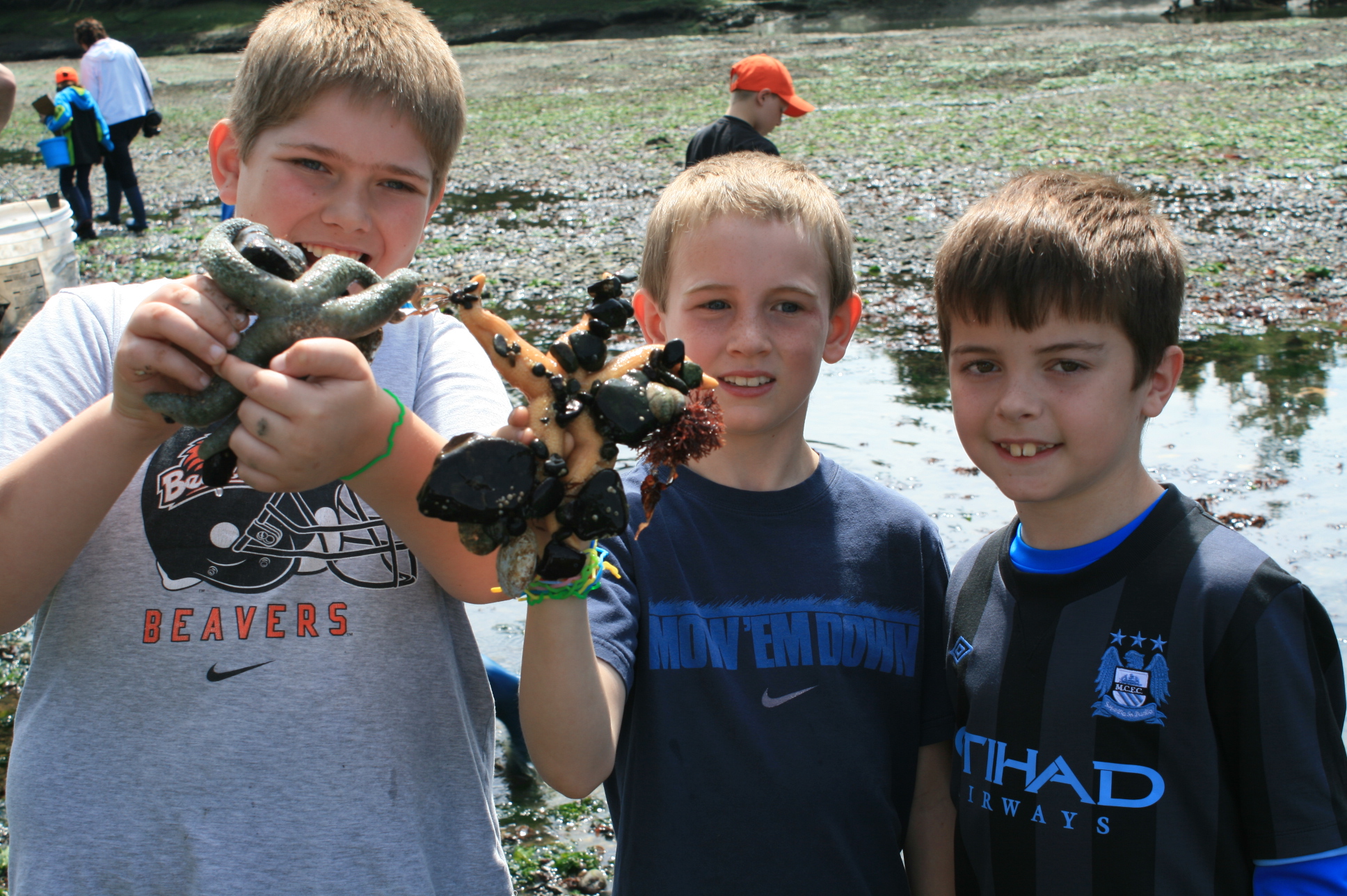UPDATE 2019: Taylor Shellfish Farm no long gives public tours due to new safety regulations.
By Amy Rowley
 Another parent chaperone on the field trip turned to me and said, “I don’t think these kids realize how cool this experience is.” She went on to discuss the rich learning opportunity for a group of more than 60 third graders from Griffin School.
Another parent chaperone on the field trip turned to me and said, “I don’t think these kids realize how cool this experience is.” She went on to discuss the rich learning opportunity for a group of more than 60 third graders from Griffin School.
At the time, we were wandering around a beach on Little Skookum Inlet. The property is farmed by locally owned Taylor Shellfish, the host for our field trip. Taylor Shellfish is the largest producer of Manila clams and geoducks in the United States.
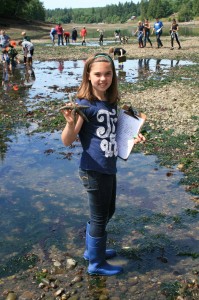
The kids were busy checking off natural wildlife during a scavenger hunt on the beach. They were hunting for specific shells, a wide variety of clams, and brightly colored sea stars living throughout the tidepools. The checklist also included habitat surrounding the waterfront, such as Douglas fir pine cones, driftwood without any living organisms, and signs of pollution. The elusive ghost shrimp escaped us but we were able to find more than 25 different species of living organisms.
Prior to the beach visit, the group toured the Taylor Shellfish production facilities. The hour-long tour took us from start-to-finish, teaching the kids (and their parent chaperones) how shellfish goes from beach to table.
The tour began with clams. We saw the huge hoses that wash the grime off the clams before they are sorted, weighed, and boxed for shipment. Our tour guide taught us that the majority of Taylor’s production is shipped worldwide via aircraft. He said that Taylor clams that are bought in the grocery store or a restaurant have only traveled a maximum of three days. They are ‘that’ fresh.
The elementary students marveled over the huge geoducks that our tour guide pulled from a bin. The live geoducks were passed around the group so kids could touch and feel the weight of the animal. The delicacies, which dig three feet underground, are typically shipped to Asia.
The next stop was to watch the magic hands of master oyster shuckers. The average Taylor employee shucks 30 gallons of fresh oysters daily. With a few quick flicks of the wrist, the shuckers had an oyster out of the shell and into a bin.
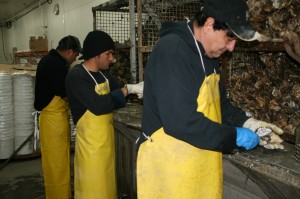
The fresh oysters are moved to the next room where an advanced machine washes and weighs each individual oyster before they are packaged for the grocery store.
The Taylor tour guide then told us about the logistics of moving millions of shellfish annually. Through technology and record keeping, the farmers can trace an individual oyster back to the seed, including information on the beach where the oyster grew and the specific employee who shucked it from the shell.
The final stop was to the production facility that freezes and packages oysters in the shell. The oysters are kept in the half shell and then frozen in a tray before being refrigerated at minus 40 degrees.
Taylor Shellfish farms four species of oysters – Pacific, Kumamoto, Virginica, and the rare, native Olympia oyster. The leftover shells dry for one year before being recycled back onto the beach to grow more food. Each year, Taylor grows 3 million dozen oysters, a fact that astonished most of us.
Beyond teaching school children about shellfish farming practices, the goal of the field trip was to expand the community’s knowledge about the importance of clean water.
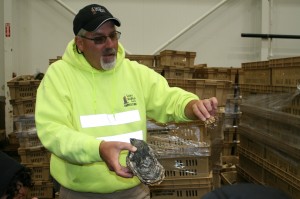
Jennifer Hopper, who coordinates education and outreach for Taylor Shellfish, talked about the pride of producing local food. But she stressed the importance of teaching the community about the impact of water quality on Taylor’s business.
“Touring Taylor gives kids (and the community) a unique experience. We need clean water to be in business,” said Hopper who talked about picking up pet waste, maintaining a working septic system, using fertilizer sparingly, and washing your car at a car wash rather than at home. Each of these actions, whether you live on the shoreline or not, impacts clean water.
Over the past two years, Hopper and her sister Nicole who educates in the North Sound, have collectively presented to 438 classrooms and conducted 202 field trips. Taylor estimates that the Hopper sisters have reached over 16,000 people directly with their message.
“The more folks we can reach and educate about shellfish farming, water quality, and the ecosystem services provided by our shellfish, the better,” added Hopper.
Your family can visit Taylor Shellfish too. Keep in mind that it’s a noisy, working operation and quite chilly. Wear layers and a hooded sweatshirt or cap. Kids under the age of five should probably be left at home.
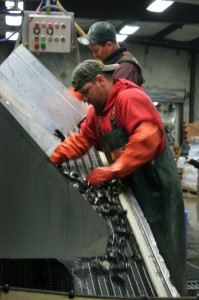
While your trip will likely be limited to the production facility, it would make a great activity for out-of-town visitors. Pick up some fresh oysters or clams on your way out to enjoy for dinner. Simply contact Jennifer Hooper, in advance, to arrange your tour.
130 SE Lynch Road
Shelton, WA 98584
360.426.6178
For more photos from the tour, click here.
Thrifty Thurston highlights inexpensive family fun in Thurston County. The weekly series focuses on family-friendly activities throughout our community. If you have a suggestion for a post, send us a note at submit@thurstontalk.com. For more events and to learn what’s happening in Olympia and the surrounding area, click here.






































